
There is also a row of igneous rocks on display immediately adjacent to the driveway, and near the NW entrance to the RockWalk path. These samples are meant to show the variation in igneous rocks due to their stage of development (e.g. in relation to Bowen’s Reaction Series). Generally the most ‘mafic’ of these specimens is at the entrance to the Park, and the composition gets progressively more ‘felsic’ as you move into the Park.
Norman L. Bowen (1887-1956) was a Canadian Geologist and a pioneer in “petrology”…the experimental study of the origin and chemical composition of rocks. Educated at Queen’s University, he spent most of his research career at the Carnegie Institution of Washington, D.C.
BR#1
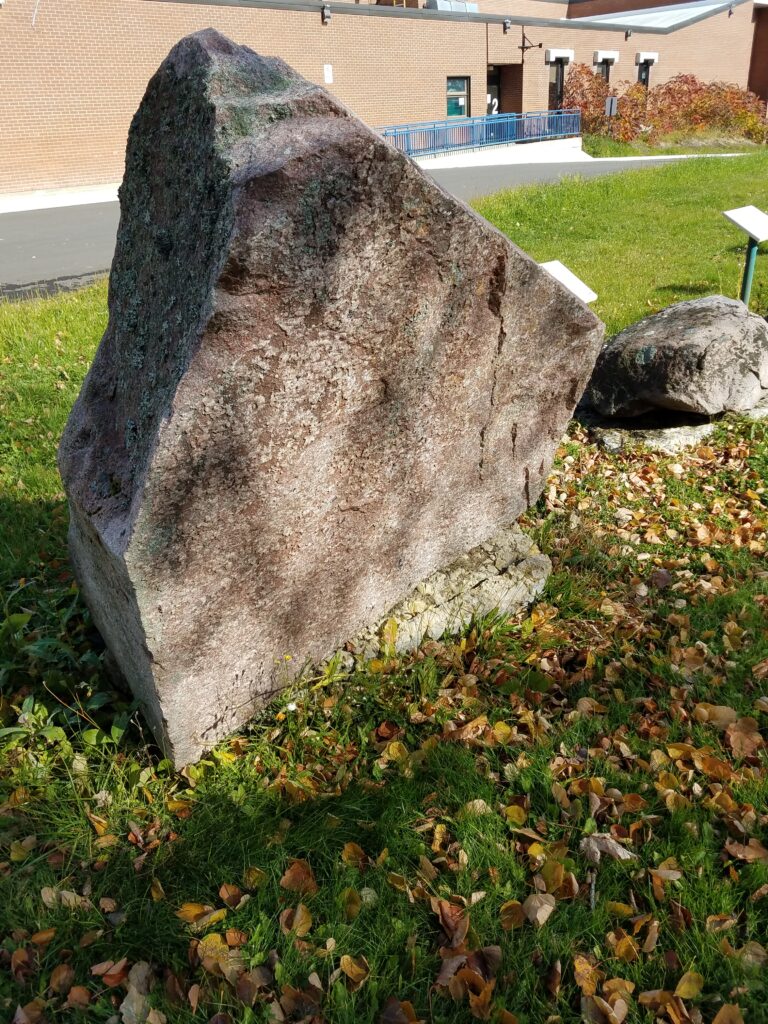
This is red granite from the old Ville Marie quarry in Quebec. There are a few purple quartz crystals within this sample, but rather than suggest the presence of amethyst, this coloration is more likely due to changes with local metamorphism. This granite was used within the town to build houses, as well as providing a facing in the Church and arena. It can even be seen as stone walls in both Haileybury (Russell St.) and New Liskeard, (near the west end of the Wabi River bridge).
BR#2
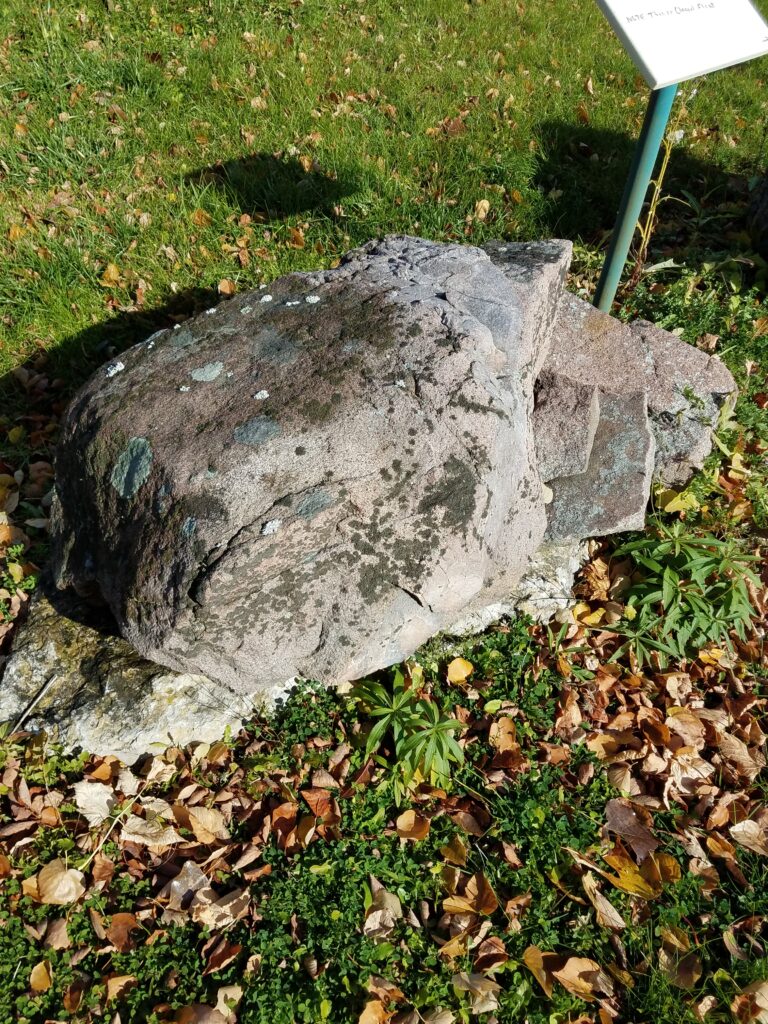
This sample is syenite from Casey Township, and in fact is the material that forms the core of Casey Mountain (Highway #65 east). Visible on the west side of the mountain in rock-cut are contacts with limestone, and mineralisation in some of the limestone vugs. The syenite looks very similar to granite, BUT has less than 5% quartz as an essential mineral, whereas granite has more than 5% quartz as an essential mineral.
BR#3
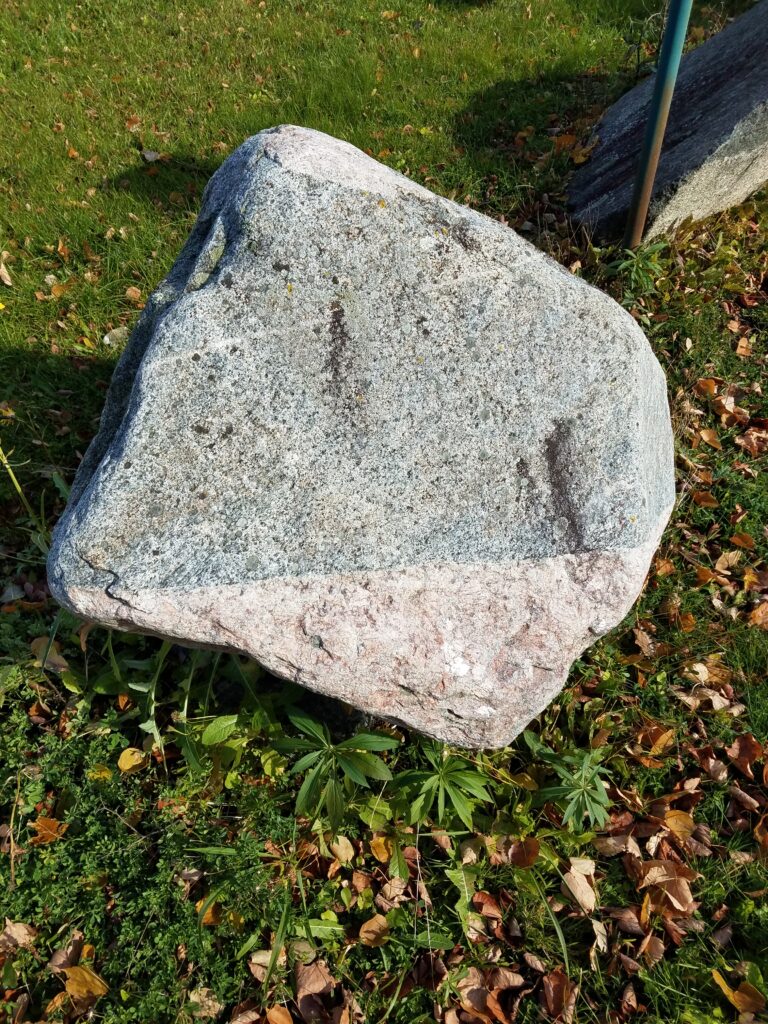
Granodiorite? (further evaluation required)
BR#4
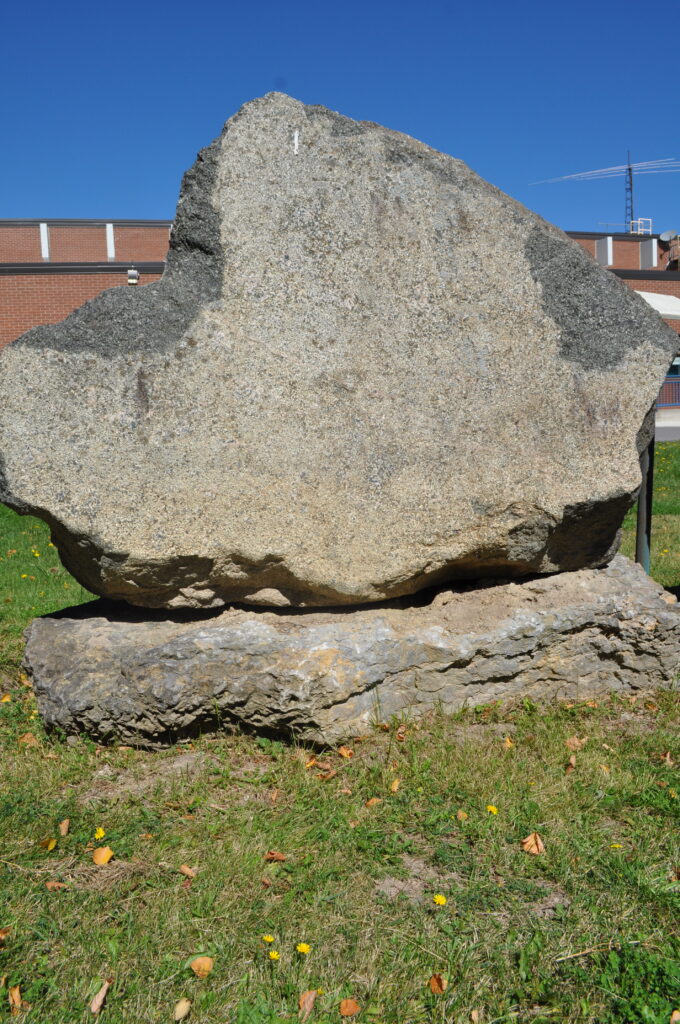
This sample of “Crystallized” diabase was donated by Hughie Moore, P.Eng. and was found on his mine claim just north of Elk Lake ON. The rock was found at the base of the 330 meter thick Nipissing intrusive sill, where it had cooled slowly under confining pressure. The earliest formed crystals were heavier, and settled by the “gravitative differentiation” process toward the base of the cooling magma. Therefore, the resulting rock has an increased concentration of mafic minerals such as Olivine and Hypersthene (an orthopyroxene) near the base. Hugh was a 1951 “Provincial Institute of Mining” Alumnus, a geologist, and prospector. He was foremost, a champion of the Haileybury School of Mines.
Internet Experiment…seek: Cooling Rate & Crystal Size – Seth Stein
BR#5
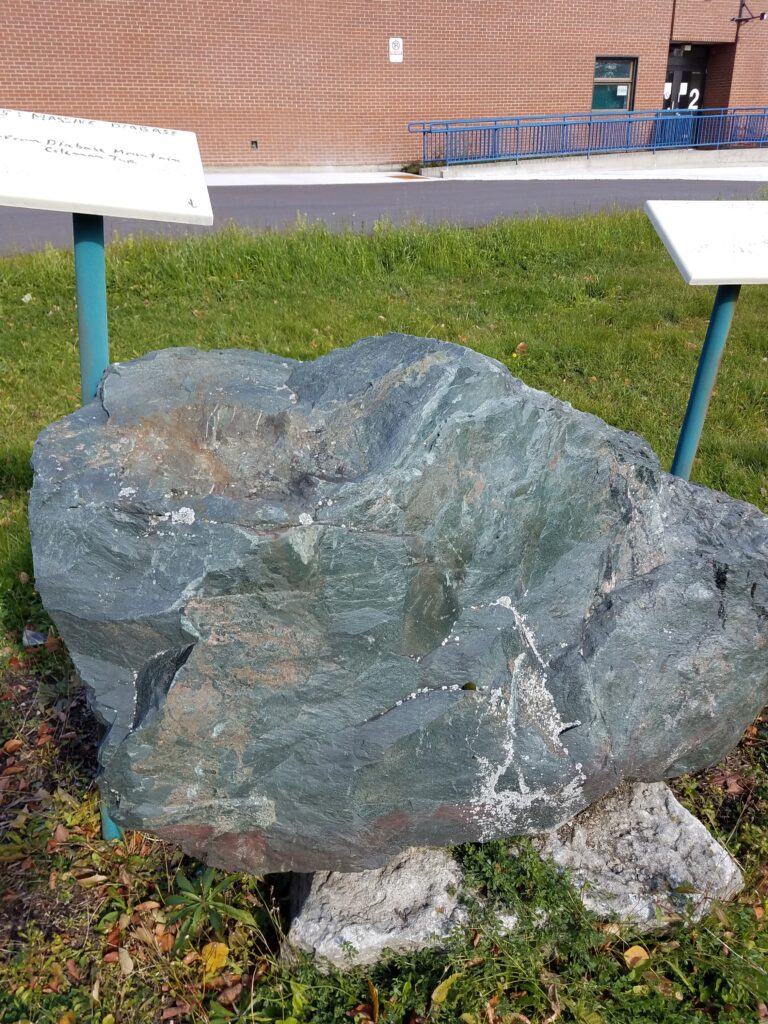
Massive diabase from Diabase Mountain in Coleman Twp. The two essential minerals that define this rock are pyroxene and plagioclase feldspar. Typically this type of rock has a classic igneous texture as the two main mineral species crystallize by growing fairly well-shaped crystals simultaneously in a magma melt, and forming an interwoven mesh of crystals, i.e. the rock you see here. Sedimentary rocks, on the other hand are composed of weathered grains, so that they tend to be ‘cemented’ together, unlike the igneous texture represented here by diabase.
BR#11
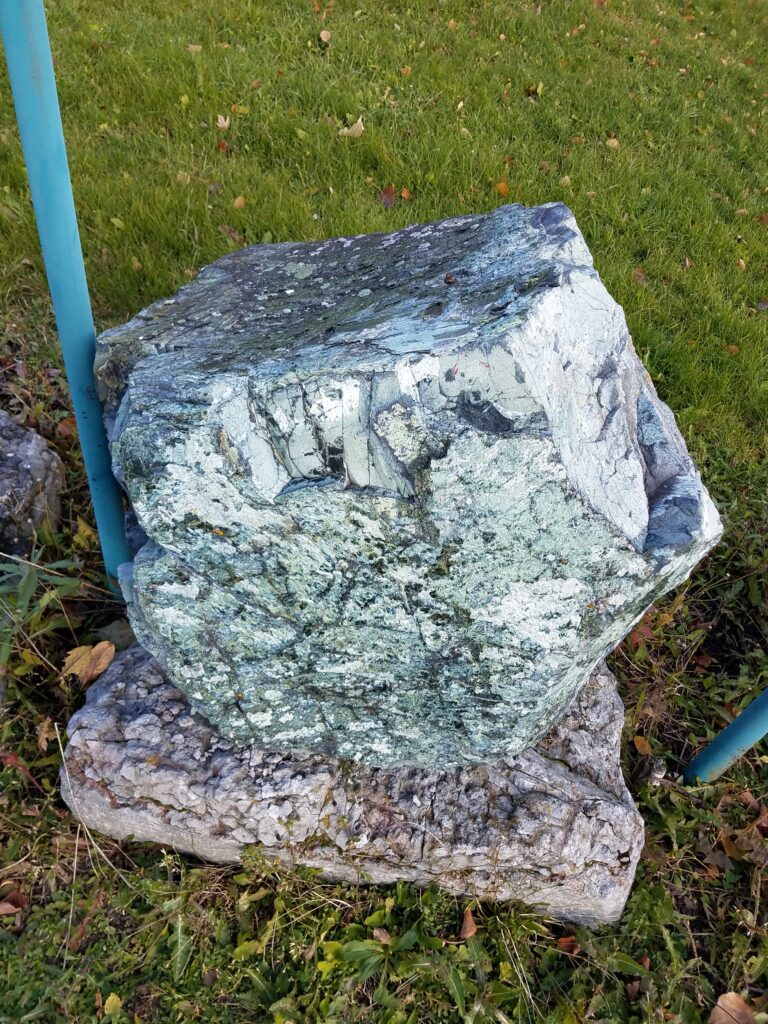
This is a sample of ultramafic rock, in the serpentinite-lizardite class. Such rocks form early in Bowen’s Reaction cycle, at high temperatures as magmas cool, and the first minerals to crystallize are olivine, pyroxene, and calcic plagioclase feldspar. This sample came from the bottom level of the open pit at the Johns-Manville asbestos mine, east of Matheson.
BR#12
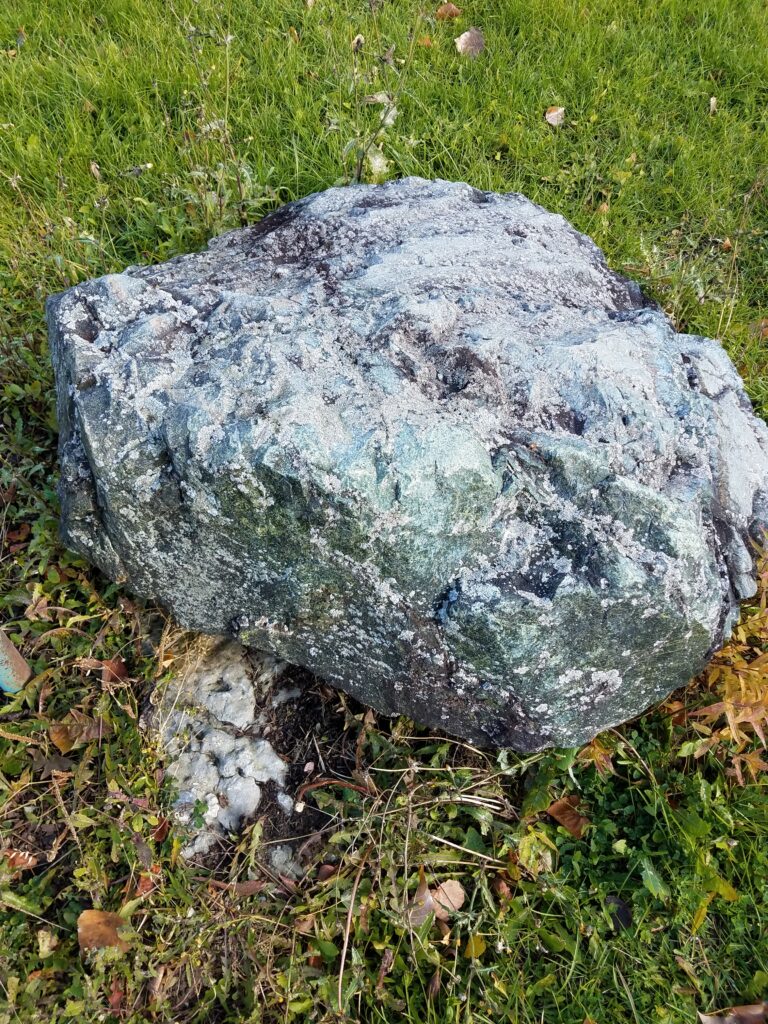
This rock is also an example of ultramafic material, being closely related to peridotite. This type of rock is similar to the basal part of ophiolite suite of rocks, which in turn is recognized to be a slice of the Earth’s crust, as seen, for example on the west coast of the island of Newfoundland. It was obtained from the bottom of an open pit mine at Asbestos, Quebec. Note that “Ultramafic” rock describes igneous rocks that contain a very small amount of Silica, while the “mafic” rocks contain much more Silica.
Internet Definition…seek: Ultramafic Rock – New World Encyclopedia